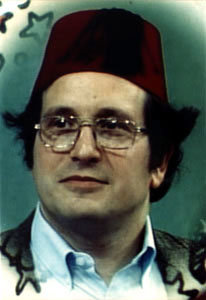Related Research Articles
Computer music is the application of computing technology in music composition, to help human composers create new music or to have computers independently create music, such as with algorithmic composition programs. It includes the theory and application of new and existing computer software technologies and basic aspects of music, such as sound synthesis, digital signal processing, sound design, sonic diffusion, acoustics, electrical engineering, and psychoacoustics. The field of computer music can trace its roots back to the origins of electronic music, and the first experiments and innovations with electronic instruments at the turn of the 20th century.

Digital music technology encompasses digital instruments, computers, electronic effects units, software, or digital audio equipment by a performer, composer, sound engineer, DJ, or record producer to produce, perform or record music. The term refers to electronic devices, instruments, computer hardware, and software used in performance, playback, recording, composition, mixing, analysis, and editing of music.

Gerald Jay Sussman is the Panasonic Professor of Electrical Engineering at the Massachusetts Institute of Technology (MIT). He has been involved in artificial intelligence (AI) research at MIT since 1964. His research has centered on understanding the problem-solving strategies used by scientists and engineers, with the goals of automating parts of the process and formalizing it to provide more effective methods of science and engineering education. Sussman has also worked in computer languages, in computer architecture, and in Very Large Scale Integration (VLSI) design.
A music sequencer is a device or application software that can record, edit, or play back music, by handling note and performance information in several forms, typically CV/Gate, MIDI, or Open Sound Control, and possibly audio and automation data for digital audio workstations (DAWs) and plug-ins.
Artificial consciousness (AC), also known as machine consciousness (MC), synthetic consciousness or digital consciousness, is the consciousness hypothesized to be possible in artificial intelligence. It is also the corresponding field of study, which draws insights from philosophy of mind, philosophy of artificial intelligence, cognitive science and neuroscience. The same terminology can be used with the term "sentience" instead of "consciousness" when specifically designating phenomenal consciousness.

Generative art refers to art that in whole or in part has been created with the use of an autonomous system. An autonomous system in this context is generally one that is non-human and can independently determine features of an artwork that would otherwise require decisions made directly by the artist. In some cases the human creator may claim that the generative system represents their own artistic idea, and in others that the system takes on the role of the creator.
Algorithmic composition is the technique of using algorithms to create music.
Generative music is a term popularized by Brian Eno to describe music that is ever-different and changing, and that is created by a system.
David Cope is an American author, composer, scientist, and Dickerson Emeriti Professor of Music at UC Santa Cruz. His primary area of research involves artificial intelligence and music; he writes programs and algorithms that can analyze existing music and create new compositions in the style of the original input music. He taught the groundbreaking summer workshop in Workshop in Algorithmic Computer Music (WACM) that was open to the public as well as a general education course entitled Artificial Intelligence and Music for enrolled UCSC students. Cope is also co-founder and CTO Emeritus of Recombinant Inc., a music technology company.

A neural network, also called a neuronal network, is an interconnected population of neurons. Biological neural networks are studied to understand the organization and functioning of nervous systems.
An intelligent tutoring system (ITS) is a computer system that imitates human tutors and aims to provide immediate and customized instruction or feedback to learners, usually without requiring intervention from a human teacher. ITSs have the common goal of enabling learning in a meaningful and effective manner by using a variety of computing technologies. There are many examples of ITSs being used in both formal education and professional settings in which they have demonstrated their capabilities and limitations. There is a close relationship between intelligent tutoring, cognitive learning theories and design; and there is ongoing research to improve the effectiveness of ITS. An ITS typically aims to replicate the demonstrated benefits of one-to-one, personalized tutoring, in contexts where students would otherwise have access to one-to-many instruction from a single teacher, or no teacher at all. ITSs are often designed with the goal of providing access to high quality education to each and every student.

Eduardo Reck Miranda is a Brazilian composer of chamber and electroacoustic pieces but is most notable in the United Kingdom for his scientific research into computer music, particularly in the field of human-machine interfaces where brain waves will replace keyboards and voice commands to permit the disabled to express themselves musically.
Evolutionary music is the audio counterpart to evolutionary art, whereby algorithmic music is created using an evolutionary algorithm. The process begins with a population of individuals which by some means or other produce audio, which is either initialized randomly or based on human-generated music. Then through the repeated application of computational steps analogous to biological selection, recombination and mutation the aim is for the produced audio to become more musical. Evolutionary sound synthesis is a related technique for generating sounds or synthesizer instruments. Evolutionary music is typically generated using an interactive evolutionary algorithm where the fitness function is the user or audience, as it is difficult to capture the aesthetic qualities of music computationally. However, research into automated measures of musical quality is also active. Evolutionary computation techniques have also been applied to harmonization and accompaniment tasks. The most commonly used evolutionary computation techniques are genetic algorithms and genetic programming.
Artificial imagination is a narrow subcomponent of artificial general intelligence which generates, simulates, and facilitates real or possible fiction models to create predictions, inventions, or conscious experiences.

Computational creativity is a multidisciplinary endeavour that is located at the intersection of the fields of artificial intelligence, cognitive psychology, philosophy, and the arts.
Pop music automation is a field of study among musicians and computer scientists with a goal of producing successful pop music algorithmically. It is often based on the premise that pop music is especially formulaic, unchanging, and easy to compose. The idea of automating pop music composition is related to many ideas in algorithmic music, Artificial Intelligence (AI) and computational creativity.
Artificial intelligence and music (AIM) is a common subject in the International Computer Music Conference, the Computing Society Conference and the International Joint Conference on Artificial Intelligence. The first International Computer Music Conference (ICMC) was held in 1974 at Michigan State University. Current research includes the application of AI in music composition, performance, theory and digital sound processing.
Cognitive musicology is a branch of cognitive science concerned with computationally modeling musical knowledge with the goal of understanding both music and cognition.

François Pachet is a French scientist, composer and director of the Spotify Creator Technology Research Lab. Before joining Spotify he led Sony Computer Science Laboratory in Paris. He is one of the pioneers of computer music closely linked to artificial intelligence, especially in the field of machine improvisation and style modelling. He has been elected ECCAI Fellow in 2014.
References
General references
- Computer Models of Musical Creativity, MIT Press (December 16, 2005), ISBN 0262033380
Inline citations
- ↑ Adams, Tim (2010-07-10). "David Cope: 'You pushed the button and out came hundreds and thousands of sonatas'". The Observer. ISSN 0029-7712 . Retrieved 2017-10-06.
- ↑ Leach, Ben (2009-10-22). "Emily Howell: the computer program that composes classical music". Daily Telegraph. ISSN 0307-1235 . Retrieved 2017-10-06.
- 1 2 Cheng, Jacqui (30 September 2009). "Virtual Composer Makes Beautiful Music and Stirs Controversy". Ars Technica.
- ↑ David Cope (1987), "Experiments in Music Intelligence." In Proceedings of the International Computer Music Conference, San Francisco: Computer Music Assn.
- ↑ Wiggins, G. A. (14 December 2007). "Computer Models of Musical Creativity: A Review of Computer Models of Musical Creativity by David Cope" (PDF). Literary and Linguistic Computing. 23 (1): 109–116. doi:10.1093/llc/fqm025. Archived from the original (PDF) on 19 March 2012. Retrieved 24 October 2014.
- ↑ "Emily Howell: From Darkness, Light. Music Composed by a computer program designed by David Cope. From Darkness, Light". www.centaurrecords.com.
- ↑ "Artificial Intelligence Able to Create Music". Next Nature Network. 2015-03-21. Retrieved 2017-10-06.
- ↑ "Emily Howell: Breathless. Silver Blood". www.centaurrecords.com.